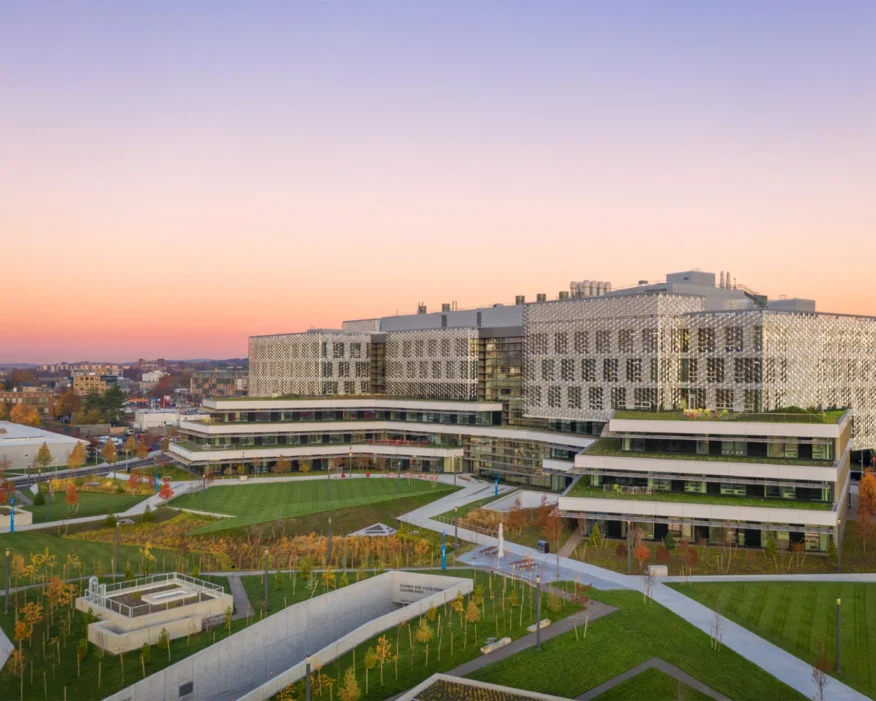Harvard Healthier Building Academy
What is the Harvard Healthier Building Academy?
Launched in 2016, the Harvard Healthier Building Academy (HHBA), is a partnership led by the Office for Sustainability together with researchers from the Harvard T. H. Chan School of Public Health, John A. Paulson School of Engineering and Applied Sciences, and Harvard Medical School. The mission of the HHBA is to design, build, and operate healthier buildings, including identifying and reducing “chemical classes of concern” (many derived from petrochemicals) that pose health risks throughout the supply chain, the production of which involves significant amounts of carbon emissions.
Addressing Classes of Chemicals
Since 2014, Harvard has required building project teams to reduce and eliminate the use of harmful classes of chemicals, leveraging the research of Harvard faculty and other experts through the HHBA. Harvard’s Sustainable Building Standards currently require project teams to avoid multiple classes of chemicals (related groups of harmful chemicals) including per- and poly-fluoroalkyl substances (PFAS), chemical flame retardants, and antimicrobials, across 14 key interior product categories (e.g., carpet, flooring, furniture, window treatments, paint, ceiling tiles, etc.). Harvard is leveraging University purchasing power and working with vendors and suppliers, to accelerate the transition to healthier building materials and more transparent, healthier, and equitable supply chains. These new standards not only prioritize and protect the Harvard community, but also the workers and communities throughout the supply chain where chemicals of concern are created or are used in product manufacturing. As these standards continue to develop, HHBA will regularly share its work with third-party manufacturers, project teams, and other building owners, including non-profits and public schools as well.
HHBA’s Goal:
Purchasing decisions not only have the potential to increase carbon emissions, but also can potentially impact the health of building occupants and upstream communities. HHBA works to advocate for and advance the creation of healthier buildings by translating research into practice to improve building elements including indoor air quality and access to daylight, while also removing harmful classes of chemicals, such as PFAS, from the buildings and fixtures as well as the supply chain. HHBA works to educate project teams, sustainability consultants, and other owners, on the best practices for reducing the ubiquitous use of chemicals of concern in everyday products. It also works to identify and incorporate into the Sustainable Building Standards Requirements new categories and classes of chemicals of concern through ongoing research and partnership. These standards send clear market signals for a healthier sustainable built environment for all.
HHBA’s Progress:
The HHBA has informed purchases in over 50 University capital projects representing approximately 4 million square feet of real estate. The HHBA has also worked to inform researchers who have proven through peer-reviewed scientific studies that different purchasing decisions can result in measurable reductions of chemicals of concern, like PFAS, from interior spaces. Most importantly, HHBA’s work has demonstrated that there are viable, high-quality, durable products that meet these healthier building standards. Harvard looks forward to continuing to share our knowledge and help others make safer, more sustainable purchasing decisions that benefit occupants and the communities where these chemicals of concern are created and used.
Follow some of the latest news publications by members of the Healthy Buildings team and others who are contributing valuable, science-based, and comprehensible information on health in the built environment.
